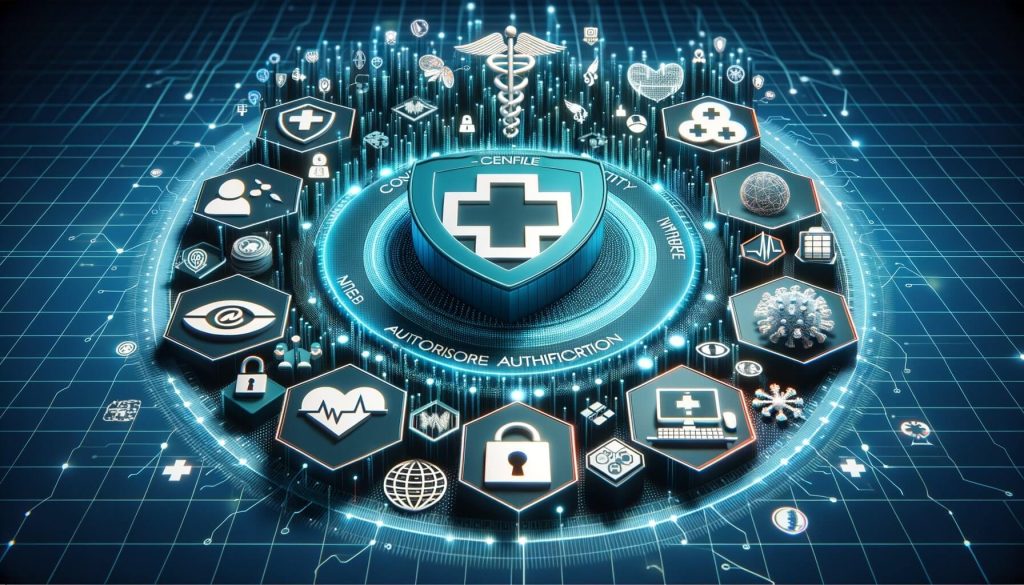In today’s digital age, the protection of sensitive information has become a top priority for businesses across various industries. This is especially true for healthcare practices, which handle a vast amount of patient data on a daily basis. To ensure the security of this information, it is crucial for healthcare practices to update their policies to include Payment Card Industry Data Security Standard (PCI DSS) requirements.
PCI DSS is a set of security standards designed to protect cardholder data and reduce the risk of data breaches. While PCI DSS primarily focuses on the protection of credit card information, its principles can be applied to safeguard other sensitive patient data as well. By updating their practice policies to include PCI requirements, healthcare practices can enhance their data security measures and mitigate the risk of data breaches.
Assessing Your Current Practice Policies: Identifying Gaps in PCI Requirements

Before updating your practice policies to include PCI requirements, it is essential to assess your current policies and identify any gaps in compliance. This assessment will help you understand the areas that need improvement and enable you to develop a comprehensive plan for updating your policies.
Start by reviewing your existing policies related to data security, access controls, network security, and incident response. Look for any inconsistencies or outdated practices that may leave your practice vulnerable to data breaches. It is also important to evaluate your current staff training programs to ensure that they cover the necessary PCI compliance topics.
Consider conducting a risk assessment to identify potential vulnerabilities and threats to your practice’s data security. This assessment will help you prioritize your efforts and allocate resources effectively. It is recommended to involve your IT department or a qualified security professional in this process to ensure a thorough evaluation.
Creating a PCI Compliance Team: Roles and Responsibilities

To effectively update your practice policies to include PCI requirements, it is crucial to establish a PCI compliance team. This team will be responsible for overseeing the implementation and maintenance of PCI compliance measures within your practice. The team should consist of individuals from various departments, including IT, administration, and legal.
Assign a team leader who will be responsible for coordinating the efforts of the team and ensuring that all tasks are completed in a timely manner. The team leader should have a strong understanding of PCI requirements and be able to communicate effectively with all stakeholders.
The IT department should play a significant role in the PCI compliance team, as they will be responsible for implementing technical security measures and ensuring the integrity of your practice’s network. The legal department should provide guidance on legal and regulatory requirements related to data security and privacy.
Other team members should be responsible for conducting regular audits, monitoring compliance, and providing ongoing training to staff members. It is important to clearly define the roles and responsibilities of each team member to ensure a smooth and efficient implementation process.
Developing a Comprehensive Data Security Policy: Protecting Patient Information

One of the key components of PCI compliance is the development of a comprehensive data security policy. This policy should outline the procedures and protocols that your practice will follow to protect patient information from unauthorized access or disclosure.
Start by clearly defining the types of data that your practice collects and stores, including credit card information, medical records, and personal identification information. Identify the specific security measures that will be implemented to protect each type of data.
For credit card information, PCI DSS requires practices to implement measures such as encryption, secure transmission, and restricted access. Your data security policy should outline how these measures will be implemented and enforced within your practice.
In addition to credit card information, your data security policy should also address the protection of other sensitive patient data. This may include medical records, social security numbers, and insurance information. Consider implementing measures such as role-based access controls, data encryption, and regular data backups to ensure the security of this information.
It is important to involve all relevant stakeholders in the development of your data security policy. This includes IT personnel, legal advisors, and staff members who handle patient data on a regular basis. By involving these individuals, you can ensure that the policy is comprehensive, practical, and aligned with the specific needs of your practice.
Implementing Strong Access Controls: Restricting Data Access to Authorized Personnel

One of the fundamental principles of PCI compliance is the implementation of strong access controls. Access controls ensure that only authorized personnel have access to sensitive patient data, reducing the risk of data breaches and unauthorized disclosures.
Start by conducting a thorough review of your current access control measures. Identify any weaknesses or vulnerabilities that may exist and develop a plan to address them. This may include implementing multi-factor authentication, role-based access controls, and regular access reviews.
Multi-factor authentication adds an extra layer of security by requiring users to provide multiple forms of identification before accessing sensitive data. This may include a combination of passwords, security tokens, or biometric authentication.
Role-based access controls ensure that each staff member has access only to the data and systems necessary to perform their job duties. By limiting access to sensitive information, you can reduce the risk of accidental or intentional data breaches.
Regular access reviews are essential to ensure that access privileges are up to date and aligned with staff members’ job responsibilities. Conduct periodic audits to identify any unauthorized access or changes to access privileges and take appropriate action to rectify the situation.
Securing Your Practice Network: Safeguarding Against Cyber Threats
Securing your practice network is a critical aspect of PCI compliance. A secure network infrastructure is essential to protect patient data from cyber threats such as hacking, malware, and phishing attacks.
Start by conducting a thorough assessment of your practice’s network infrastructure. Identify any vulnerabilities or weaknesses that may exist and develop a plan to address them. This may include implementing firewalls, intrusion detection systems, and regular network monitoring.
Firewalls act as a barrier between your practice’s internal network and the external internet, preventing unauthorized access and blocking malicious traffic. It is important to configure your firewalls properly and keep them up to date with the latest security patches.
Intrusion detection systems (IDS) monitor network traffic for suspicious activity and alert administrators of potential security breaches. IDS can help identify and respond to cyber threats in real-time, minimizing the impact of a data breach.
Regular network monitoring is essential to detect any unauthorized access or suspicious activity on your practice’s network. Implement a system that continuously monitors network traffic and alerts administrators of any potential security incidents.
It is also important to educate staff members about the importance of network security and the role they play in safeguarding patient data. Train them on best practices for creating strong passwords, identifying phishing emails, and reporting any suspicious activity.
Encrypting Data Transmission: Ensuring Secure Communication Channels
Another important aspect of PCI compliance is the encryption of data transmission. Encryption ensures that sensitive patient data is securely transmitted over communication channels, reducing the risk of interception or unauthorized access.
Start by identifying the communication channels that your practice uses to transmit sensitive data. This may include email, file transfers, and remote access to your practice’s network. Evaluate the security measures currently in place for each communication channel and identify any gaps in compliance.
Implement secure email protocols such as Transport Layer Security (TLS) or Secure Sockets Layer (SSL) to encrypt email communications containing sensitive patient data. These protocols ensure that email messages are encrypted during transmission, making it difficult for unauthorized individuals to intercept or access the data.
For file transfers, consider implementing secure file transfer protocols such as Secure File Transfer Protocol (SFTP) or Secure Shell (SSH). These protocols encrypt file transfers, ensuring that sensitive data remains secure during transmission.
If your practice allows remote access to your network, ensure that the remote access solution is secure and encrypted. This may include implementing virtual private network (VPN) technology or other secure remote access solutions.
Regularly Monitoring and Testing Security Systems: Identifying Vulnerabilities
To ensure the effectiveness of your practice’s security systems, it is crucial to regularly monitor and test them for vulnerabilities. Regular monitoring and testing help identify any weaknesses or vulnerabilities that may exist and enable you to take appropriate action to address them.
Implement a system that continuously monitors your practice’s security systems, including firewalls, intrusion detection systems, and access controls. This system should provide real-time alerts of any potential security incidents and enable administrators to respond promptly.
Regularly conduct vulnerability assessments and penetration testing to identify any weaknesses in your practice’s security systems. Vulnerability assessments involve scanning your network and systems for known vulnerabilities and weaknesses. Penetration testing goes a step further by simulating real-world attacks to identify any potential vulnerabilities that may be exploited by hackers.
It is important to involve qualified security professionals in the monitoring and testing process. These professionals have the expertise and tools necessary to identify vulnerabilities and recommend appropriate remediation measures.
Responding to Security Incidents: Establishing an Incident Response Plan
Despite implementing robust security measures, there is always a possibility of a security incident occurring. To effectively respond to such incidents, it is crucial to establish an incident response plan.
An incident response plan outlines the procedures and protocols that your practice will follow in the event of a security incident. It should include steps for identifying and containing the incident, notifying affected individuals, and conducting a post-incident analysis.
Start by identifying the key stakeholders who will be involved in the incident response process. This may include IT personnel, legal advisors, public relations representatives, and senior management.
Develop a communication plan that outlines how your practice will notify affected individuals in the event of a data breach. This plan should include steps for notifying patients, regulatory authorities, and credit card companies, if applicable.
Conduct regular drills and exercises to test the effectiveness of your incident response plan. These drills will help identify any gaps or weaknesses in your plan and enable you to make necessary improvements.
Training Staff on PCI Compliance: Ensuring Awareness and Compliance
One of the most critical aspects of PCI compliance is ensuring that all staff members are aware of the requirements and comply with the policies and procedures in place. Training staff on PCI compliance is essential to create a culture of security within your practice and reduce the risk of data breaches.
Start by developing a comprehensive training program that covers the key principles of PCI compliance, including data security, access controls, network security, and incident response. This training program should be tailored to the specific roles and responsibilities of each staff member.
Provide regular training sessions to all staff members, including new hires and existing employees. These training sessions should cover the basics of PCI compliance as well as any updates or changes to the requirements.
Consider implementing an ongoing awareness program to reinforce the importance of PCI compliance and keep staff members informed about the latest security threats and best practices. This may include regular newsletters, email updates, or online training modules.
It is important to track and document staff training to ensure compliance and demonstrate due diligence. Maintain records of training sessions attended by each staff member and conduct periodic assessments to evaluate their understanding of PCI compliance.
FAQs
Q1. What is PCI compliance, and why is it important for healthcare practices?
Answer: PCI compliance refers to adhering to the Payment Card Industry Data Security Standard (PCI DSS) to protect payment card data and prevent data breaches. It is crucial for healthcare practices to maintain PCI compliance to safeguard patient information, maintain trust, and comply with industry regulations.
Q2. How can I assess my current practice policies for PCI compliance?
Answer: To assess your current practice policies, conduct a thorough review of your data handling practices, identify vulnerabilities, and determine areas that need improvement. This assessment will help you understand the scope of changes required and prioritize your efforts.
Q3. What is the role of a PCI compliance team, and who should be part of it?
Answer: A PCI compliance team is responsible for overseeing the implementation and maintenance of PCI requirements within your practice. It should consist of individuals from various departments, including IT, finance, administration, and legal. The team leader should coordinate efforts, ensure compliance, and communicate updates to the rest of the staff.
Q4. How can I develop a comprehensive data security policy for my practice?
Answer: Developing a comprehensive data security policy involves outlining procedures and protocols for handling, storing, and transmitting patient information securely. It should cover areas such as data classification, access controls, incident response, and employee training.
Q5. What are some best practices for securing practice networks?
Answer: Some best practices for securing practice networks include implementing firewalls, regularly updating and patching network devices, implementing intrusion detection and prevention systems (IDPS), and considering the use of virtual private networks (VPNs) for secure data transmission.
Conclusion
Updating your practice policies to include PCI requirements is essential to protect sensitive patient data and reduce the risk of data breaches. By assessing your current policies, creating a PCI compliance team, developing a comprehensive data security policy, implementing strong access controls, securing your practice network, encrypting data transmission, regularly monitoring and testing security systems, responding to security incidents, and training staff on PCI compliance, you can enhance your practice’s data security measures and ensure compliance with PCI DSS.
Remember, PCI compliance is an ongoing process that requires regular monitoring, updates, and training. Stay informed about the latest security threats and best practices, and adapt your policies and procedures accordingly. By prioritizing data security and compliance, you can safeguard your practice’s reputation and protect the sensitive information entrusted to you by your patients.
